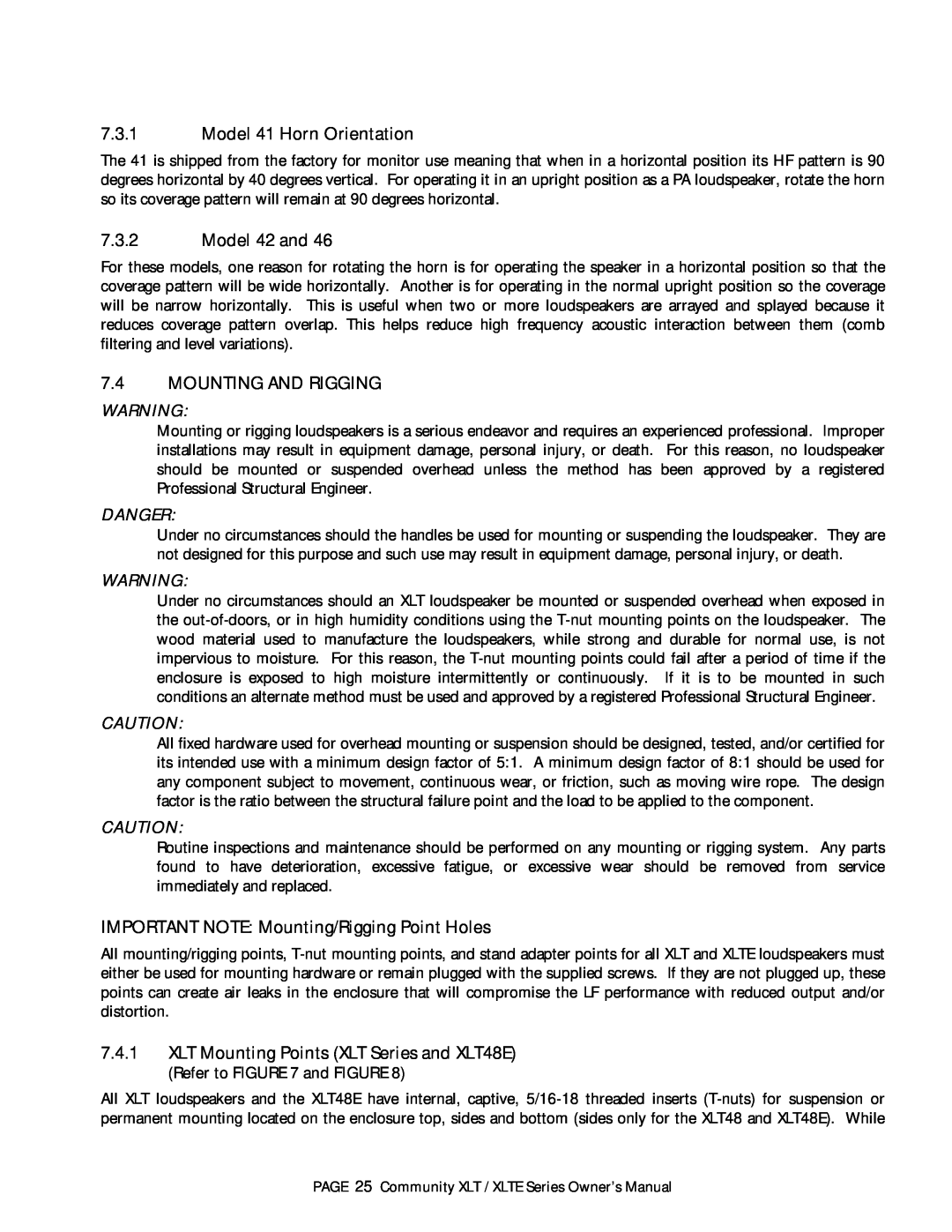7.3.1Model 41 Horn Orientation
The 41 is shipped from the factory for monitor use meaning that when in a horizontal position its HF pattern is 90 degrees horizontal by 40 degrees vertical. For operating it in an upright position as a PA loudspeaker, rotate the horn so its coverage pattern will remain at 90 degrees horizontal.
7.3.2Model 42 and 46
For these models, one reason for rotating the horn is for operating the speaker in a horizontal position so that the coverage pattern will be wide horizontally. Another is for operating in the normal upright position so the coverage will be narrow horizontally. This is useful when two or more loudspeakers are arrayed and splayed because it reduces coverage pattern overlap. This helps reduce high frequency acoustic interaction between them (comb filtering and level variations).
7.4MOUNTING AND RIGGING
WARNING:
Mounting or rigging loudspeakers is a serious endeavor and requires an experienced professional. Improper installations may result in equipment damage, personal injury, or death. For this reason, no loudspeaker should be mounted or suspended overhead unless the method has been approved by a registered Professional Structural Engineer.
DANGER:
Under no circumstances should the handles be used for mounting or suspending the loudspeaker. They are not designed for this purpose and such use may result in equipment damage, personal injury, or death.
WARNING:
Under no circumstances should an XLT loudspeaker be mounted or suspended overhead when exposed in the
CAUTION:
All fixed hardware used for overhead mounting or suspension should be designed, tested, and/or certified for its intended use with a minimum design factor of 5:1. A minimum design factor of 8:1 should be used for any component subject to movement, continuous wear, or friction, such as moving wire rope. The design factor is the ratio between the structural failure point and the load to be applied to the component.
CAUTION:
Routine inspections and maintenance should be performed on any mounting or rigging system. Any parts found to have deterioration, excessive fatigue, or excessive wear should be removed from service immediately and replaced.
IMPORTANT NOTE: Mounting/Rigging Point Holes
All mounting/rigging points,
7.4.1XLT Mounting Points (XLT Series and XLT48E)
(Refer to FIGURE 7 and FIGURE 8)
All XLT loudspeakers and the XLT48E have internal, captive,
PAGE 25 Community XLT / XLTE Series Owner’s Manual
